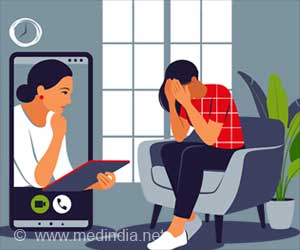New findings from a study reveal girls with history of ADHD are more prone to self injury and attempted suicide.

"Like boys with ADHD, girls continue to have problems with academic achievement and relationships, and need special services as they enter early adulthood," said Stephen Hinshaw, UC Berkeley professor of psychology and lead author of a study that reports after 10 years on the largest-ever sample of girls whose ADHD was first diagnosed in childhood.
"Our findings of extremely high rates of cutting and other forms of self-injury, along with suicide attempts, show us that the long-term consequences of ADHD females are profound," he added.
The study is published today (Tuesday, August 14) in the Journal of Consulting and Clinical Psychology. Its results are consistent with earlier findings by the UC Berkeley team that, as girls with ADHD grow older, they show fewer visible symptoms of the disorder, but continue to suffer in hidden ways. The findings challenge assumptions that girls can "outgrow" ADHD, and underscore the need for long-term monitoring and treatment of the disorder, Hinshaw said.
The longitudinal study, which began when the girls were ages 6 to 12, is funded by grants from the National Institute of Mental Health. Since 1997, Hinshaw and his team have tracked a racially and socio-economically diverse group of girls with ADHD in the San Francisco Bay Area through early childhood summer camps, adolescence and now early adulthood. In addition to this new study, many others have been published by the team about the girls every five years.
In the United States, more than 5 million children ages 3-17 – approximately one in 11 – have been diagnosed with ADHD, according to the Centers for Disease Control and Prevention. ADHD is characterized by poor concentration, distractibility, hyperactivity, impulsiveness and other symptoms that are inappropriate for the child's age. Evidence-based treatment includes stimulant medications and various forms of behavior therapy.
The study's major finding was that the group with combined inattention and hyperactivity-impulsivity during childhood was by far the most likely to manifest self-injury and suicide attempts in early adulthood. In fact, the study pointed out, more than half of the members of this subgroup were reported to have engaged in self-injurious behavior, and more than one-fifth had attempted suicide, Hinshaw said.
In the first study on this group, published in 2002, the 6- to- 12-year old girls attended five-week camps where they were closely monitored as they partook in art and drama classes and outdoor activities. Those taking ADHD medication volunteered to go off the drug treatment for much of the summer camp study. The counselors and staff observing all the participants did not know which of them had been diagnosed with ADHD.
That study found that girls with ADHD were more likely to struggle academically and to be rejected by their peers, compared to the comparison peer group. The five-year follow-up study, when the girls were 12 to 17 and experiencing early to mid-adolescence, found that the fidgety and impulsive symptoms tended to subside in the early teen years, but that the learning gap between girls with ADHD and their non-ADHD peers had widened, and eating disorders and substance abuse had surfaced.
For the latest study, in which 95 percent of the original sample of girls participated, the researchers conducted intensive interviews with the subjects and their families. Those interviews include personal reports on behaviors such as self-harm and suicide attempts, drug use, eating habits and driving behavior.
Researchers also measured key cognitive functions such as executive planning skills, which include goal-setting and monitoring, planning and keeping on task despite distractions.
While many girls in the study showed improvement in ADHD symptoms during the 10-year period, certain problems persisted and new ones emerged, suggesting that careful monitoring and treatment are essential, Hinshaw said.
"The overarching conclusion is that ADHD in girls portends continuing problems, through early adulthood," the study concluded. "Our findings argue for the clinical impact of ADHD in female samples, the public health importance of this condition on girls and women, and the need for ongoing examination of underlying mechanisms, especially regarding the high risk of self-harm in young adulthood."
That said, Hinshaw added, "ADHD is a treatable condition, as long as interventions are monitored carefully and pursued over a number of years."
Source-Eurekalert
 MEDINDIA
MEDINDIA




 Email
Email










